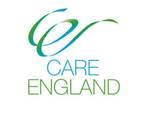
Relieving NHS pressures with acoustic monitoring

26 April 2023
Nursing is one of the largest employment sectors within the NHS. Yet the pressure faced by nurses every single day is increasing as they constantly battle the thinning line between quality care and personal burnout.

Relieving the pressure on NHS nurses in order to allow them to carry out their duties is a fundamental part of the reason acoustic monitoring has become so necessary across many care homes in the UK. By reducing the number of accidents and emergencies within care homes, the number of residents needing care at NHS hospitals is reduced, helping to relieve accumulating pressures.
So, what exactly is acoustic monitoring?
Acoustic monitoring, at its most basic level, is using acoustics (sound) to monitor specific environments. In recent years, the benefits of acoustic monitoring have become paramount in the care industry. Its ability to detect even the slightest noise created by small movements has revolutionised how carers attend to their patients or residents providing everyone with a little bit more freedom, dignity and less rigidity.
Acoustic monitoring and the NHS
The NHS provides care to millions of people every single year. Hospitals rely on strict routines to ensure patients are kept comfortable and safe, but with staff shortages and funding cuts, this can leave nurses feeling overwhelmed – especially when many admissions could be avoided with closer monitoring. By tackling the root cause of hospital admissions among the elderly and other vulnerable people, including falls within care homes, acoustic monitoring can help reduce the knock-on affect this has in hospital environments.
Benefits of acoustic monitoring in care homes to the NHS
Nursing homes with qualified on-site nurses tend to provide a higher level of care to vulnerable patients with a range of medical needs. Although not directly an NHS operation, many residents are funded by the NHS or will continue to require NHS services during their time within care homes. Acoustic monitoring can help alleviate the pressures within these care settings, ensuring care providers have a healthier and happier work environment.
Alongside this, acoustic monitoring can help to reduce the number of care home residents requiring avoidable hospital trips – ultimately helping to relieve pressure on the NHS. By detecting movement before an accident occurs, such as a resident attempting to get out of bed, or shouting for help, nursing home staff can provide swift care to the resident before the situation escalates.
According to Care Inspectorate and NHS Scotland, 40% of hospital admissions from care homes follow a fall. By introducing acoustic monitoring into nursing homes, falls have been proven to significantly reduce, protecting both the resident from harm and reducing NHS pressures.

CLB acoustic monitoring
At Adaptive IT, we provide CLB acoustic monitoring to care homes and healthcare providers across the UK. Our aim is to support the industry, allowing them to improve their levels of care for their patients and residents. Our acoustic monitoring systems are designed to extremely high specifications, allowing them to fit seamlessly into your care environment.
For more information, visit: https://adaptivecare.co.uk/solutions/acoustic-monitoring






